Azure Services for Developers: Exploring the Key Components and Capabilities
Azure Services, provided by Microsoft Azure, offer developers a vast array of tools and resources to build, deploy, and scale applications in the cloud. From infrastructure services to platform offerings and developer tools, Azure provides a comprehensive suite of services that empower developers to create robust and innovative solutions.
In this article, I will delve into the key components and capabilities of Azure Services, discuss their pros and cons, consider the cost aspects, examine the types of applications you can build using Azure Services, and explore the cloud patterns that they enable. By gaining a comprehensive understanding of Azure Services, developers can leverage their full potential to create scalable, efficient, and modern applications.
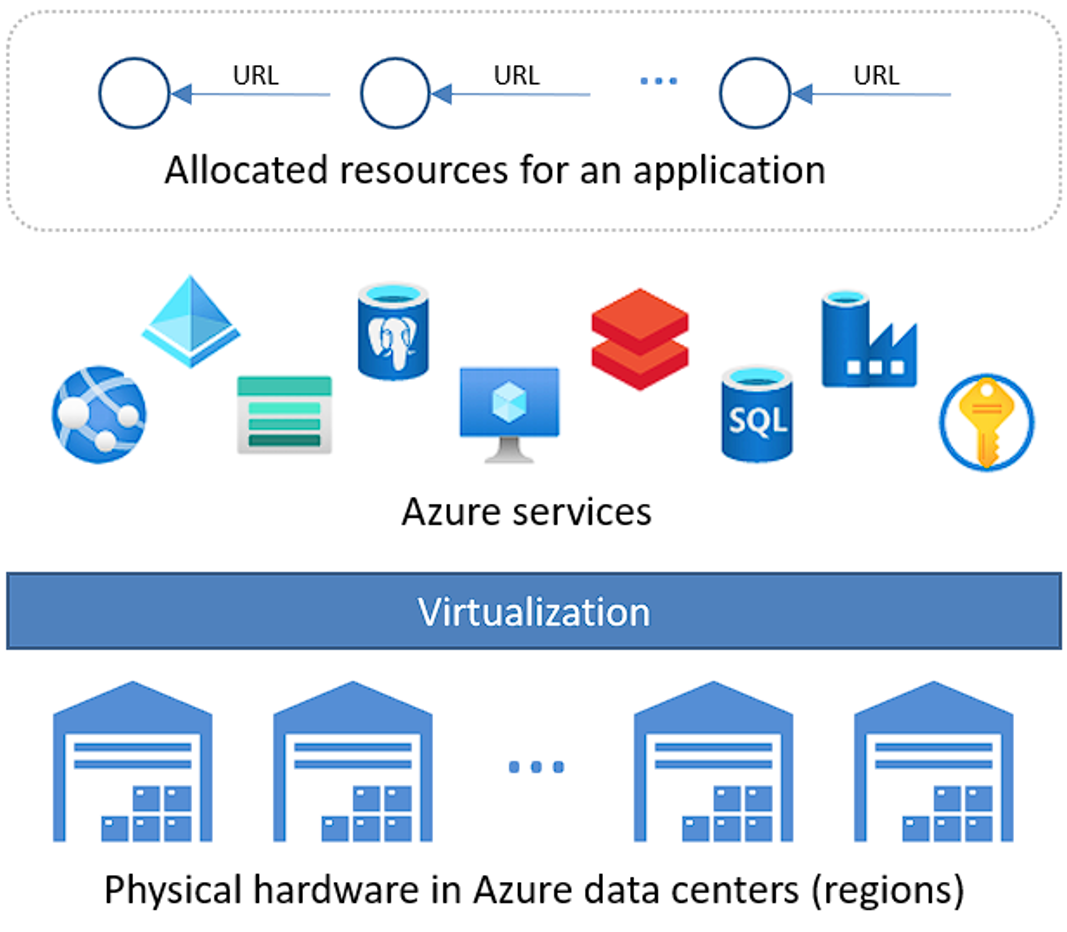
Key Components and Capabilities of Azure Services
Azure Services encompass a wide range of components and capabilities that cater to different stages of the application development life cycle. I’ll describe some of the key components and capabilities of Azure Services.
Web Development and Integration Services:
- Azure Functions: Functions is a serverless compute service that allows developers to run code in the cloud without managing servers. Developers can use Azure Functions for event-driven serverless architectures, such as processing incoming messages or triggering actions based on specific events.
- Azure Logic Apps: Logic Apps is a cloud-based service that enables developers to build and orchestrate workflows and business processes using a visual designer. Developers can use Logic Apps to create integrations between different systems and services, automating business processes.
- Azure App Service: App Service is a fully managed platform for building, deploying, and scaling web and mobile applications. Developers can use App Service to host and manage their applications, whether they are built with .NET, Java, Node.js, or other frameworks.

Storage Services:
- Azure Blob Storage: Blob Storage provides highly scalable and cost-effective storage for unstructured data, such as images, videos, and documents. Developers can use Blob Storage to store media files for a content management system.
- Azure Files: Azure Files offers fully managed file shares in the cloud, accessible via the Server Message Block (SMB) protocol. Developers can use Azure Files to store and share files across multiple virtual machines, such as for a file-sharing application.
- Azure Queue Storage: Queue Storage provides a message queueing system for asynchronous communication between application components. Developers can use Azure Queue Storage to decouple different parts of an application, allowing for scalability and fault tolerance.
- Azure Table storage: Table storage is a NoSQL key-value store that provides schema-less storage for structured data. Developers can use Azure Table storage to store and retrieve large volumes of data, such as sensor readings or user profiles.
Database Services:
- Azure Cosmos DB: Cosmos DB is a globally distributed, multi-model database service. It supports multiple data models, including document, key-value, graph, and columnar. Developers can use Cosmos DB to build highly available and globally scalable applications with low latency access to data.
- Azure SQL Database: SQL Database is a managed relational database service that provides a fully managed, highly available, and scalable platform for running SQL-based applications. Developers can use SQL Database for storing structured data and building relational database-driven applications.
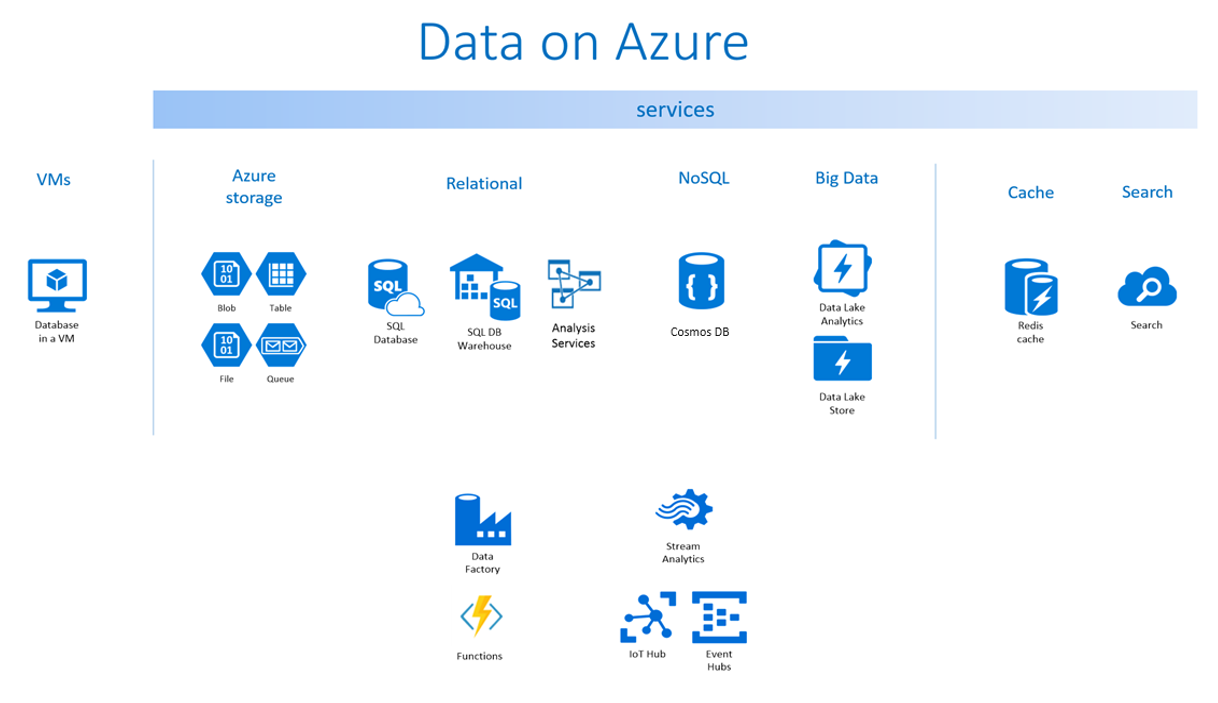
AI and Machine Learning Services:
- Azure Cognitive Services: Cognitive Services offers a suite of pre-built AI models and APIs that enable developers to add AI capabilities to their applications. Examples include computer vision for image recognition, speech recognition, and natural language processing.
- Azure Machine Learning: Machine learning provides a cloud-based platform for developing, training, and deploying machine learning models. Developers can use Azure Machine Learning to build predictive analytics, recommendation systems, or fraud detection models.
- Azure Bot Service: Azure Bot Service is a platform for creating, deploying, and managing chatbots and conversational agents. It offers tools and services to build intelligent bots that can interact with users across various channels, enhancing customer engagement and automating tasks. With its scalability and integration options, Azure Bot Service simplifies bot development and deployment.

Compute Services:
- Azure Virtual Machines (VMs): Developers can create and manage virtual machines in Azure, allowing them to run applications and services in a scalable and flexible environment. For example, a developer can provision a Windows or Linux VM and deploy their application stack on it.
- Azure Kubernetes Service (AKS): AKS is a managed Kubernetes service that simplifies the deployment, scaling, and management of containerized applications. Developers can use AKS to orchestrate and scale their applications across multiple containers. For instance, an e-commerce platform can use AKS to deploy microservices-based architecture.
- Azure Container Instances (ACI): ACI offers a serverless compute option for running containers without the need to manage the underlying infrastructure. It provides quick and seamless container deployments. Developers can use ACI to run containerized batch jobs, run data processing tasks, or build CI/CD pipelines.
These are just a few examples of popular Azure services used by developers. Azure's extensive service portfolio provides a wide range of options for developers to choose from, depending on their specific application requirements and development needs.

Applications That Can Be Built With Azure Services
Azure Services enable developers to build a wide range of applications, including:
- Web and mobile applications: Azure App Service, Azure Front Door, and Azure Functions provide the necessary components to build scalable and responsive web and mobile applications. Developers can leverage these services for hosting, load balancing, and serverless execution of their applications, ensuring a seamless user experience.
- Big data and analytics: Azure Data Lake, Azure Synapse Analytics, and Azure Databricks empower developers to process and analyze large volumes of data. These services provide capabilities for data ingestion, storage, transformation, and advanced analytics, enabling the development of data-driven applications and insights.
- IoT solutions: Azure IoT Hub, Azure IoT Central, and Azure Time Series Insights facilitate the development of IoT solutions. These services offer device connectivity, data ingestion, real-time monitoring, and analytics, enabling developers to build scalable and secure IoT applications.
AI and ML applications: Azure Cognitive Services, Azure Machine Learning, and Azure Bot Service allow developers to integrate AI and ML capabilities into their applications. These services provide pre-built models, APIs, and frameworks for tasks such as speech recognition, natural language processing, computer vision, and predictive analytics.
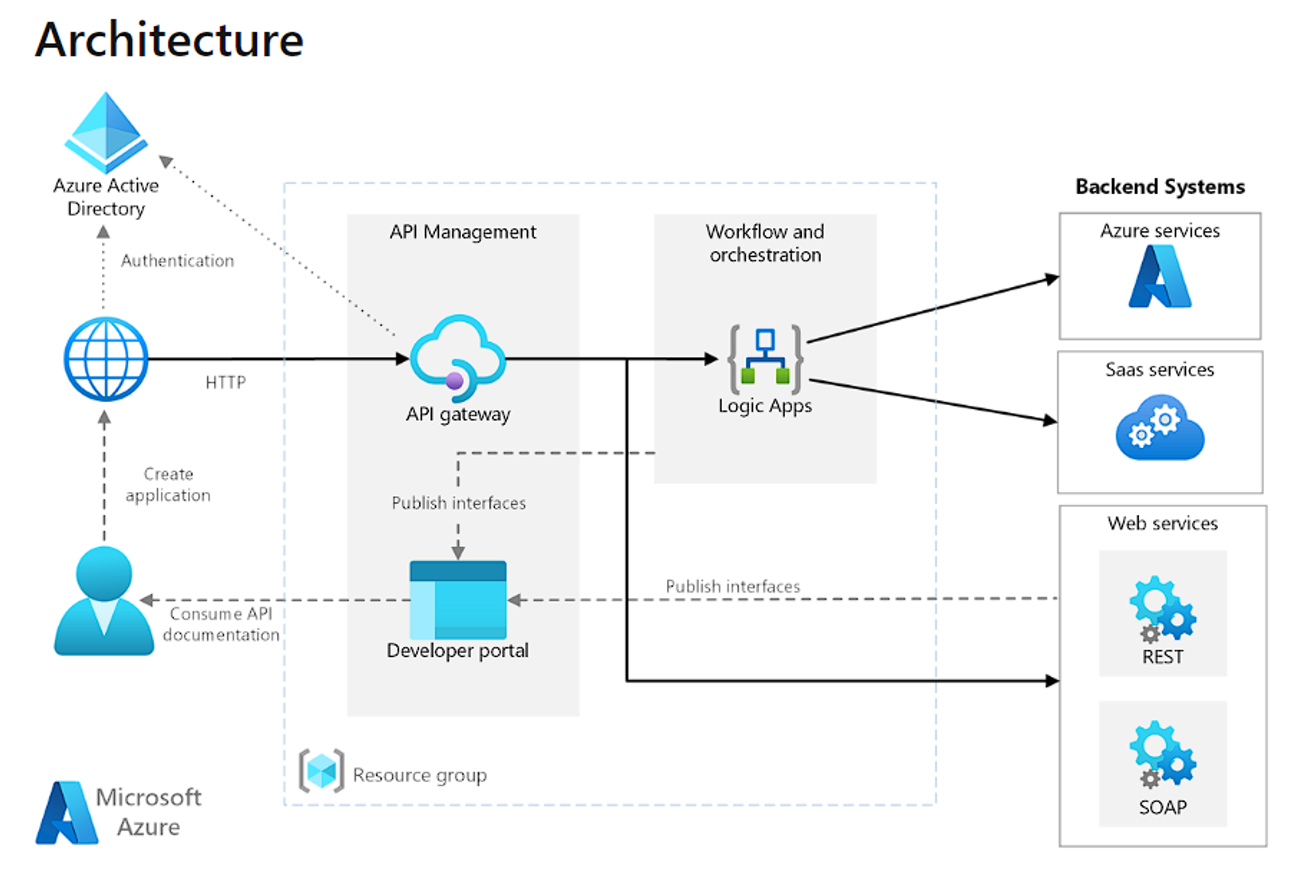
Pros and Cons of Azure Services
While Azure offers scalability and strong security, it also presents challenges like complex pricing and a learning curve. Evaluating these factors helps make informed decisions about utilizing Azure for specific requirements.
Pros of Azure Services:
- Scalability: Azure Services provide the ability to scale resources up or down based on demand, ensuring that applications can handle varying workloads effectively.
- Flexibility: Azure offers a wide range of services and tools, allowing developers to choose the ones that best fit their specific needs and requirements.
- Cost-effectiveness: Azure follows a pay-as-you-go pricing model, meaning you only pay for the resources you use. This can be more cost-effective compared to the upfront costs and maintenance expenses associated with on-premises infrastructure.
- Global presence: Azure has a vast network of data centers worldwide, allowing applications to be deployed closer to end users, reducing latency and improving performance.
- Integration and compatibility: Azure seamlessly integrates with other Microsoft tools and services, enabling developers to leverage existing skills and technologies.
- Security and compliance: Azure Services offer robust security features, including encryption, identity and access management, and compliance certifications, ensuring the protection of data and adherence to regulatory standards.
Cons of Azure Services:
- Learning curve: Adopting Azure Services may require developers to learn new tools, technologies, and best practices, resulting in a learning curve that could impact initial development time.
- Vendor dependency: By using Azure Services, developers become reliant on Microsoft's infrastructure and support. This may lead to concerns regarding vendor lock-in and limited control over the underlying infrastructure.
- Connectivity and dependence on internet: Azure Services require a stable internet connection for development, deployment, and access. Organizations with poor internet connectivity or strict security policies may face challenges in utilizing Azure Services.
- Potential performance variability: Since Azure Services are hosted in the cloud, performance can be affected by factors such as network latency and resource sharing among multiple users. This may result in occasional performance variations.
Cost Considerations
Understanding how to estimate Azure service costs is crucial for optimizing resource utilization and managing budgets effectively:
- Pricing calculator: Microsoft provides an Azure Pricing Calculator that allows developers to estimate costs based on selected services, data storage, and anticipated usage.
- Total Cost of Ownership (TCO) calculator: The TCO calculator helps in comparing the costs of running applications on-premises versus in the Azure cloud.
- Azure Cost Management and billing: Azure Cost Management enables monitoring and controlling costs by setting budgets, viewing usage reports, and identifying cost-saving opportunities.
- Azure Reservations: Azure offers discounted pricing for committed usage through reserved instances, providing significant cost savings for long-term projects.
- Auto-scaling and rightsizing: Utilize auto-scaling capabilities to dynamically adjust resources based on demand, and regularly review resource utilization to right size instances and reduce wastage.
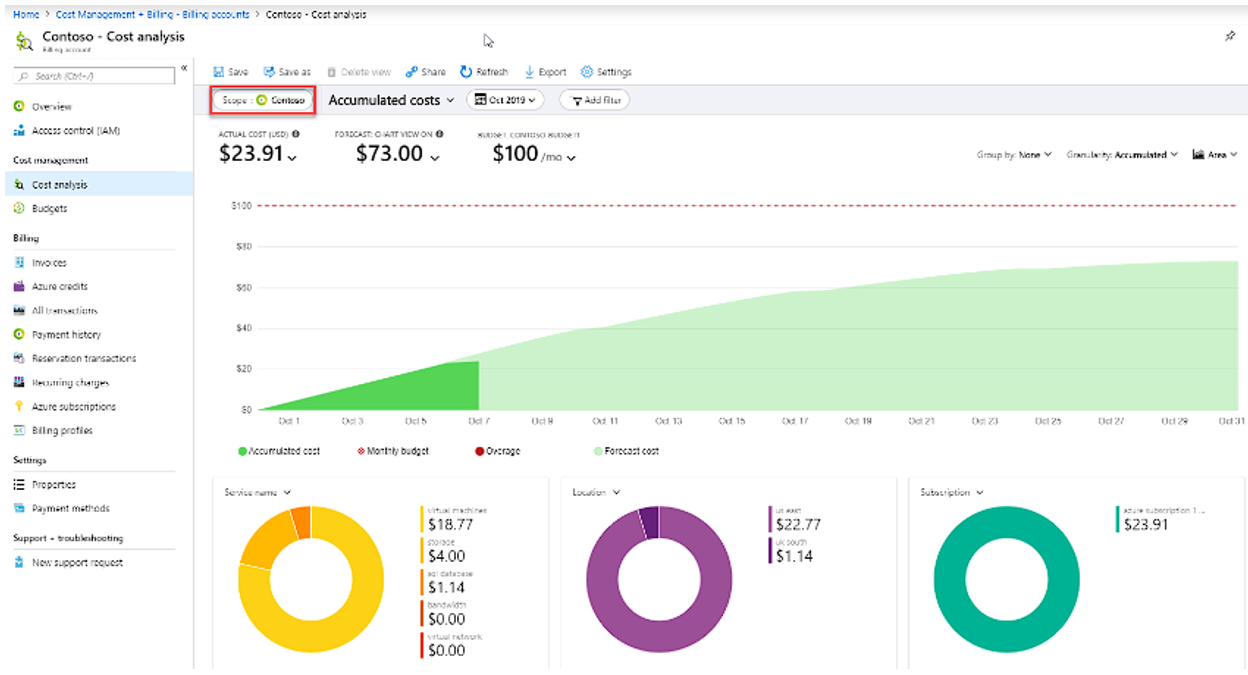
Conclusion
Azure Services provide developers with a powerful set of tools and resources to build modern applications in the cloud. With their broad service offering, scalability, integration capabilities, and comprehensive developer tools, Azure Services empower developers to create innovative solutions. While Azure Services offer numerous advantages such as scalability, broad functionality, and global presence, developers should consider factors like the learning curve, cost management, and complexity. By leveraging Azure Services, developers can build scalable, resilient, and efficient applications while benefiting from the flexibility and capabilities of the Azure cloud ecosystem. The diverse range of applications, supported cloud patterns, and cost-effective pricing models make Azure Services a compelling choice for developers looking to embrace cloud technologies and deliver cutting-edge solutions.
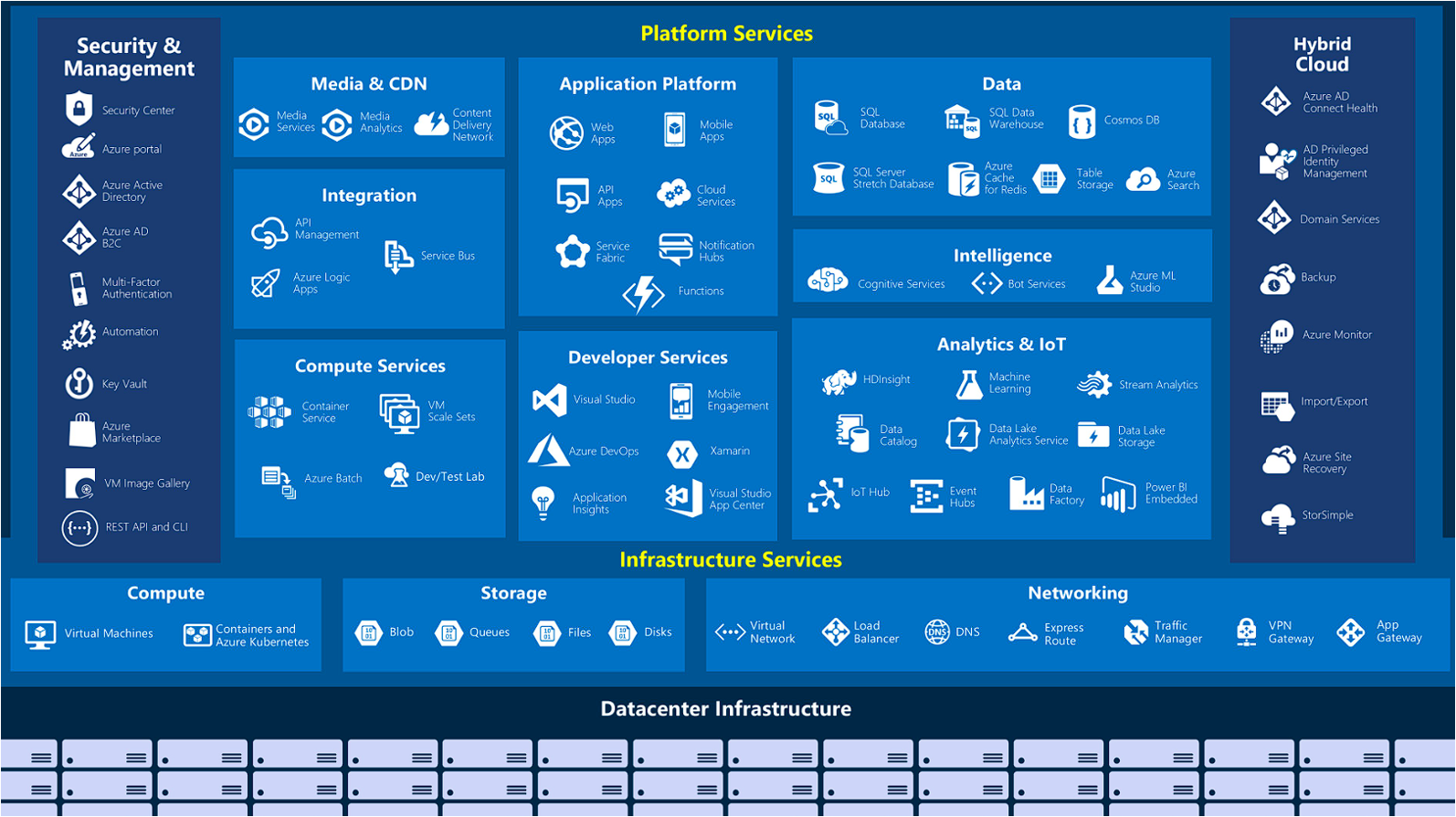
References
Azure key services
Azure Advisor
Azure Development Documentation


